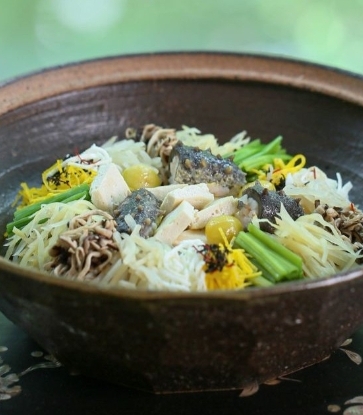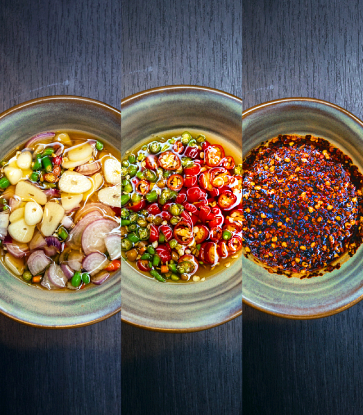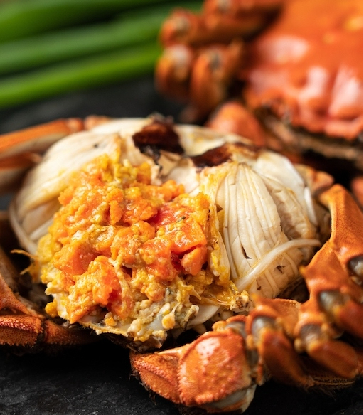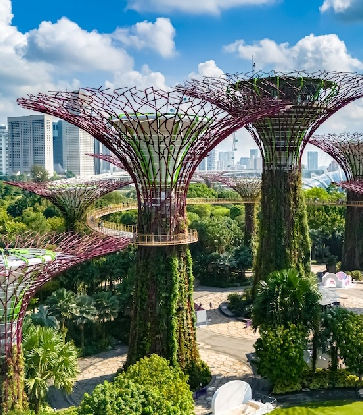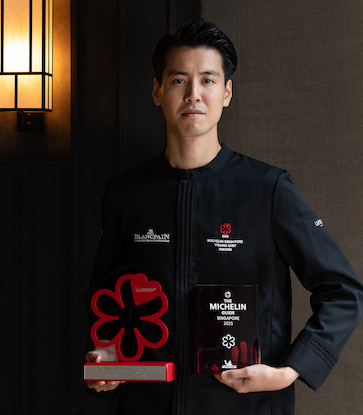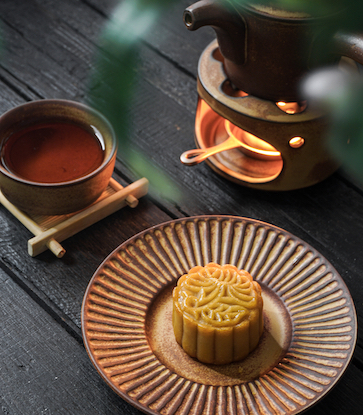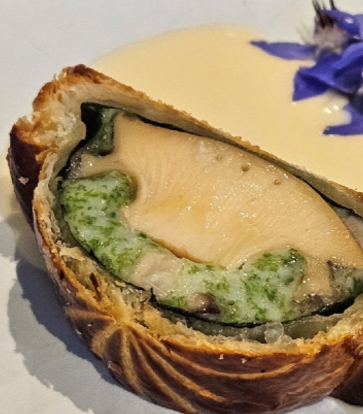To chef-owner of Seroja, Kevin Wong, produce-driven gastronomy — and, by extension, sustainability — is just something that’s always been baked into his culinary ethos.
That’s why it came as a complete shock in 2023 when the Port Klang-born chef and his restaurant — then just a year old — scored a hat trick at the MICHELIN Guide Ceremony 2023 in Singapore.
Wong received the MICHELIN Guide Singapore 2023 Young Chef Award, while his restaurant Seroja earned a MICHELIN Star, and, in a historic first for Singapore, the MICHELIN Green Star. The then-newly introduced award recognises restaurants at the forefront of the industry when it comes to sustainability practices.

Reflecting upon that night a year later, he says, “We were very honoured to receive the MICHELIN Green Star, and it was a surprise because we did not expect to receive anything. It is just part of our training, vision, and ethos for Seroja to operate in this way since we opened.”
Sourcing Drives Sustainability
Seroja means "lotus flower" in Malay, which hints at the culinary mission its founders intended — to bring up the flavours of the Malay Archipelago and place it on a stage deserving of international attention.
The restaurant found a fitting maestro in Wong, whose last appointment as head chef at two-MICHELIN-Starred contemporary Korean restaurant, Meta, came after a string of residencies at esteemed establishments across France, the United States, and Singapore.
As it happens, the methodology with which he planned to highlight the region’s food was also the most sustainable way of doing things — that is, sourcing almost all of the produce on their seafood- and vegetable-driven menu from local farmers and fishermen whose ethics align with their own.
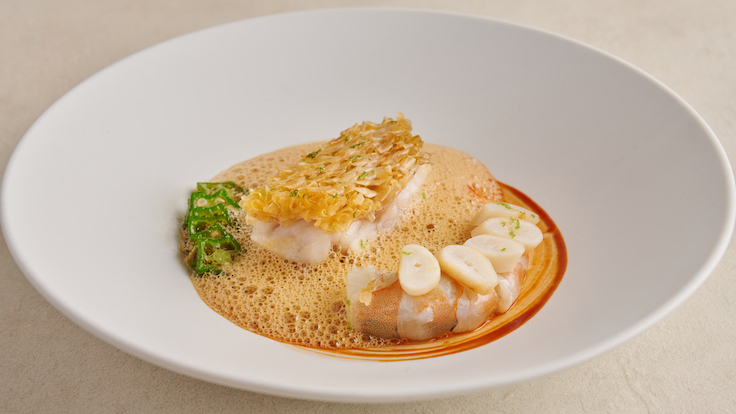
The tilefish he serves with a coating of crispy "scales" and drizzled in Sarawak white pepper curry? Line-caught, to prevent accidentally catching or harming other marine animals.
The scallop that gets charred over mangrove wood and plated over a zingy laksa leaf sauce? Hand-harvested, to better protect the seabed and reduce waste by letting younger scallops mature and spawn.
Even the vegetables are sourced from organically certified farmers, given the freedom to “send us produce that they think is the best of the day”, with the understanding that the team at Seroja have the skills and appetite to find the best place for it on that day’s menu.

This ethos is exemplified best by a salad dish at Seroja called "Tropical Landscape", which fulfils its culinary mission of showcasing the region’s tropical bounty in the most literal sense with an ever-changing ingredient list that varies with the week’s delivery.
“Sometimes, it’s a surprise, because they can only send us two kohlrabi for the entire week, or an overripe papaya that fell on the ground. We would need to use our palate to determine what to do with it,” describes Wong. “Sometimes, we can’t use it on the dish — but we could make it into a beverage.”
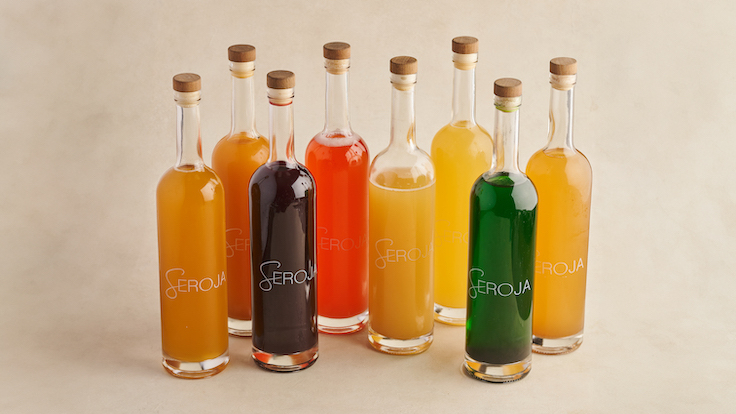
Not Your Average Beverage
Yes, the beverage programme at Seroja includes drinks influenced by the produce that the restaurant receives — not just as a way to minimise wastage and get the most out of an ingredient, but also to drive the gastronomic experience.
Wong says, “Our non-alcoholic beverages actually change depending on the menu, because of the products we use and how well they can pair.”

“We always research and try to do all sorts of things with the leftovers such as curing them, drying them, and pressing them to extract certain flavour compounds,” he explains. “Sometimes, to our surprise, we get a very different flavour profile compared to the main product itself.”
He adds, “One example is we have a green drink that we call 'Tom Yum', using cucumber peelings from our salad dish, coriander root from making our sauce, lime skin, calamansi skin, tomato seeds, and chilli seeds. All of these may be byproducts of an ingredient, but, to us, we see it as a particular ingredient that has a totally different texture, flavour, and use.”
Another example that falls closer to home? A drink that tastes like, and is paired with a dish similar to, rojak, a local-style salad with pineapple, cucumber, and a punchy sauce made from chilli, tamarind, and prawn paste.
“We found that if you boil lime skins, raw peanuts, gula melaka (palm sugar), pineapple skin, unripe papaya, overripe papaya, fermented fish sauce, and horseradish, you actually get similar flavour profile as a classic rojak sauce,” says Wong. “Since we have a lot of those, we decided we could make a drink with it, and, to our surprise, it actually worked quite well.”
Here’s a simplified version of the drink — with ingredients readily available at the supermarket — that you can try making at home.
Kevin Wong’s Rojak Drink
Ingredients:
For Step 1:
- 300g unripe papaya
- 300g overripe papaya
- 360g pineapple with skin
- 150ml apple juice (less sugar)
- 500ml water
- The skin of 1 lime
- 30g palm sugar
- 50g peanut butter
For Step 2:
- 10g sugar
- 2g fish sauce
- 1g green chilli
- 15ml lime juice
Procedure:
1. Blend all the ingredients from Step 1 and boil for 20 minutes.
2. Strain and reserve the ingredients used.
3. Mix everything with Step 2 and freeze.
4. The next day, defrost and run through a coffee filter or very fine cheese cloth to remove impurities.
5. Serve chilled.
According to Wong, the iterative process of experimenting with produce for their beverages has allowed Seroja’s team to “widen our flavour vocabulary” significantly, with lessons learnt that can just as easily be applied to their sauce-making as well.
“I believe it all comes down to really understanding the raw materials in their natural forms, and how we extract flavour using techniques that we learn from the culinary world,” he says. “Sometimes, we infuse fish bones and dried scallops from our menu to minimise waste, and the result also tastes great!”

Forging Ahead
Seroja’s chef says that sustainability in the local restaurant scene has come a long way in the eight years he’s been based in Singapore.
“For the past three years, I have seen many initiatives to raise awareness on the importance of sustainability. Not only in terms of cooking, but sustainable energy, sustainable working culture, and sustainable building materials,” he says.
“There are also many diners who are very interested to be educated on how they can practice sustainability in their daily lives, or are looking for tips and pointers on how they can view a certain produce through a different lens,” Wong continues.
To these aspiring home cooks, he offers the underrated — but often neglected — advice of planning ahead. By aligning what they’re going to cook and eat for the entire week, they can make full use of the ingredients they purchase at a supermarket without wasting, say, half of a packet of vegetables.
“For example, they can make a big batch of rempah (spice paste) and store it in the freezer. The common base of most rempahs is quite similar, and for every recipe they want to use, they can defrost some and add additional flavourings or aromatics,” he says. “Cooking to incorporate sustainability definitely requires extra effort, especially in sourcing and planning ahead.”
Seroja is located at Duo Galleria, #01-30/31/32/33, 7 Fraser Street, 189356, Singapore. Make booking via our restaurant page here.



